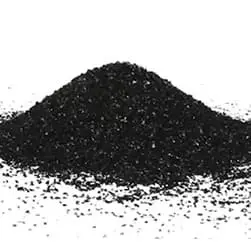IUPAC Name
Activated Carbon
Cas Number
7440-44-0
HS Code
3802.10.00
Formula
C
Industry
Water Treatment Chemicals
Appearance
Black Powder
Common Names
Activated coal, activated charcoal
Packaging
25 Kg Bag
Activated carbon, also known as activated charcoal or activated coal, is a form of carbon with small and low-volume pores which increases the surface area available to facilitate adsorption or chemical reactions. The increased surface area of activated carbon makes the material suitable for adsorption, a phenomenon where particles such as atoms, ions or molecules of gas, liquid or solid are adhered to a surface. These particles are held within the carbon’s internal pore structure by electrostatic attraction or chemisorption. This adsorption ability allows activated carbon to play an important role in many industries as it can help to reduce dangerous matter in chemical process, activate chemical reactions, and also act as a carrier for biomass and chemicals.
The most common product forms of activated carbon include:
• Extruded
• Granular
• Powder
The different forms of activated carbon allow it to be used in a wide range of applications according to their preferred properties.
Activated carbon is usually made from coconut shell charcoal or coal. To make activated carbon, it can be done by burning activated carbon material in a tightly closed place, so that only the pyrolysis process occurs.
Processing the material into activated carbon is in principle by opening the pores of the carbon charcoal which initially has an area of 2 m2/g to 300-2000 m2/g so it is called activated charcoal. There are 2 ways to activate charcoal into activated carbon, namely by using a weak oxidation reaction using water vapor at a temperature of 900-1000°C or by dehydration using chemicals or salts.
